You Don’t Know What Love Is

Lennie Tristano – Who was Lennie Tristano, the Jazz Master (1919-1978)?
Lennie Tristano was born in Illinois, Chicago in 1919 “almost blind in the bosom of a family originally from southern Italy, he began his piano studies with his mother, an opera singer and pianist. At the age of ten he enters a school in Chicago where he studies music theory, alto and tenor saxophones, clarinet and violoncello, and at the same time directs the school orchestra”.
According to the text that accompanies the aforementioned album, at this time Lennie Tristano also played trumpet, guitar and drums. He later starts higher music studies and gets a ‘Bachelor of Music’ in just two years. It is after his studies when he begins to be interested in Jazz and musical improvisation in general.
Download the best Jazz Transcriptions and sheet music from our Library.
His influences, apart from classical music (especially Bach), can be summed up with the following names: Art Tatum, Bud Powell, Earl Hines Lester Young and Charlie Parker. In 1943, he combined his career as a musician with teaching, for which he should also be considered an important ‘Jazz Educator’ (Jazz teacher).
Later he even founded his “New School Of Music” in New York. At that time he coincides with Lee Konitz, alto saxophonist, also originally from Chicago, with a unique style that will play a very important role in his future formations. In 1945, he collaborated with the formation of Earl Swope (trombonist) and Woody Herman (clarinetist, band-leader and singer), moving to New York in 1946.
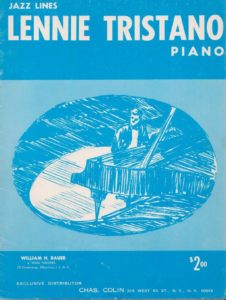
From his circle of students and colleagues an extraordinary sextet crystallized in 1948: Lee Konitz (alto sax), Warne Marsh (tenor sax), Billy Bauer (guitar), Lennie Tristano (piano), Arnold Fishkin/Harold Granowsky (bass) and Denzil Best (drums).
The group worked closely together for a year, something unusual, until recording Crosscurrent for the Capitol label in March and May 1949 in New York.
What is special about Lennie Tristano’s style is a very linear approach to his improvisations. Until now, melodic improvisation in Jazz was mainly based on playing what the harmonic base pre-established (the vertical part of the music). In other words: melodic instruments played piano or guitar chords in the form of successive notes (arpeggios) to create melodic lines.
Tristano tries to give the melodic line itself more importance, so that it could also exist without harmony. His goal is to avoid the repetition of ideas and to improvise ‘for real’ without the use of ‘licks’ (pre-established and pre-rehearsed melodic fragments). Later, on his album “Lennie Tristano” from 1955, he includes two songs in which he practically does not play any chords, only a great melodic line, a particular thing for a pianist, considering that the strong point of the piano tends to be precisely the chords. .
The last consequence, as paradoxical as it may seem, is the complete annulment of the harmonic instrument in some Cool Jazz formations, such as the Gerry Mulligan Quartet with Chet Baker from 52/53, with the formation: sax, bass trumpet and drums.
Apart from the plain melodic line, he experimented with counterpoint, that is, the simultaneous combination of two or more independent melodic voices. He is in fact considered a pioneer in counterpoint improvisation. Another peculiarity was a total independence of melody and compass.
That is to say: he played asymmetrical phrases that did not correspond to the beats, they went beyond the bar line and the structures of the general form of the musical piece, to such an extent that he had difficulty finding a drummer capable of accompanying him adequately.
The latter obviously also exists in Bebop, for example, but not in such an outlined and intentional way.
When it comes to recording his music, he is probably the first Jazz musician to experiment with the possibility of recording by tracks. This is impressively documented in his ’55 Turkish Mambo track, in which he records three melodic lines on top of each other. Each changing independently of measure during the piece. The result is a delirious combination of voices, counterpoints and polyrhythms.
Despite his special interest in melody also his chords and harmonic links were complex and innovative. To all this we must add another novelty that he introduces in his groups, and that is perhaps the most revolutionary.
At the end of their concerts, Lennie Tristano and his musicians would often play a free piece. The only thing that was remembered before performing was the order of entry of the instruments. That same thing, by the way, he also used to do with his students.
He dedicated his entire life to a single goal: to achieve total mastery of his instrument and the music for it. In this way, he wanted to reach a total state of control and freedom at the same time. In this way he wanted to give way to the essence of Jazz: feeling and emotion, the work that all Jazz musicians do deep down. Lennie Tristano, in a conversation with the critic Barry Ulanov points out: “I can never think and play at the same time […]. It’s emotionally impossible. [Adds Ulanov:] Thought is an anticipation of acting. The studio precedes a recording like this week after week, month after month, year after year.”
His album Crosscurrent (‘Capitol Sessions’) / Intuition was released in parts from 1949 to 1954, as the record company apparently did not dare to release the material at all (probably fearing financial failure, then ignoring its historical importance). Until it was finally published in its entirety in 1972. In 2012, it was included in the ‘Grammy Hall of Fame’ of recordings.
Today more than before the influence of the ‘Tristano School’ continues to have late indirect disciples such as Mark Turner, Kurt Rosenwinkel, Jorge Rossy to name a few.
Best Sheet Music download from our Library.
Browse in the Library:
| Artist or Composer / Score name | Cover | List of Contents |
|---|---|---|
| The Tom And Jerry Show – Hiromi Uehara (Piano Solo Sheet Music) (Musescore File).mscz | ||
| The Tommy Flanagan Collection |
 |
The Tommy Flanagan Collection |
| The Truman show – Dreaming Of Fiji – Philip Glass |
 |
|
| The Truman show – Reunion – Philip Glass | ||
| The Truman show – Truman Sleeps – Philip Glass | Truman sleeps | |
| The Trumanshow – Dreaming Of Fiji – Philip Glass | ||
| The Trumanshow – Truman Sleeps – Philip Glass | ||
| The Ultimate Fake Book 2nd Edition for keyboard, vocal, guitar and all C inst. |
 |
The Ultimate Fake Book 2nd Edition for keyboard, vocal, guitar and all C inst |
| The Ultimate Gospel Choir Book Vol4 |
 |
The Ultimate Gospel Choir Book Vol4 |
| The Ultimate Pop Rock Fake Book A-Z (ebook) |
 |
The Ultimate Pop Rock Fake Book A-Z (ebook) |
| The Ultimate Pop Rock Fake Book Joel Withburn |
 |
The Ultimate Pop Rock Fake Book Joel Withburn |
| The Untouchables – Main Title – Morricone (Musescore File).mscz | ||
| The Used – Smother Me | ||
| The Utimate Broadway Fake Book |
 |
The Utimate Broadway Fake Book – Hal Leonard |
| The Very Best Of John Williams – Dan Coates arr. easy piano |
 |
The Very Best Of John Williams – Dan Coates arr. easy piano |
| The Very Best Pop Songs Of All Time 19 of the best-ever pop songs Piano voica and guitar chords |
 |
The Very Best Pop Songs Of All Time |
| The Village – The Gravel Road – James Newton Howard | ||
| The Visible And Invisible In Pianoforte Technique (By Tobias Matthay) (1947) |
 |
|
| The way we were – Barbara Streisand | The way we were – Barbara Streisand | |
| The Way We Were – Piano And Vocal (Musescore File).mscz | ||
| The Way We Were – Piano and vocal Barbra Streisand | The Way We Were – Piano and vocal | |
| The Way We Were (Lead sheet with Guitar chrods and lyrics ) |
 |
|
| The Way We Were (Lead Sheet With Lyrics ) (Musescore File).mscz | ||
| The Way We Were (Musescore File).mscz | ||
| The Wedding Night (Frankenstein OST) Patrick Doyle | ||
| THE WHO – The Who Anthology |
 |
The Who Anthology Contents |
| The Who – Guitar Play Along Volume 108 WITH mp3 audio tracks with Tablature |
 |
Guitar Play-Along Volume 108 – The Who |
| The Who – Tommy (Piano-Vocal-Guitar) |
 |
The Who – Tommy |
| The Who Rockscore |
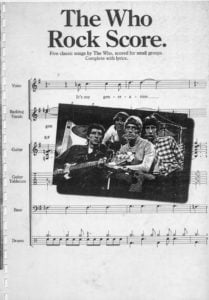 |
|
| The Who The Acoustic Guitar Collection Guitar Songbook TABs |
 |
The Who The Acoustic Guitar Collection Guitar Songbook TABs contents |
| The Who The Definitive Collection Volume A E Guitar TABs Songbook |
 |
The Who The Definitive Collection Volume A E Guitar TABs Songbook |
| The winner takes it all (Abba) | ||
| The Wizard of Oz – (Harold Arlen) Vocal & piano score |
 |
The Wizard of Oz – (Harold Arlen) -vocal.piano.score |
| The Wizard Of Oz The Musical by Andrew lloyd Webber |
 |
The Wizard Of Oz Musical Webber |
| The Wonder of Life (Afterwards OST) Alexandre Desplat | ||
| The Wonders – That Thing You Do | ||
| The Words And Music Of Frank Zappa By Kelly Fisher Lowe (Book) |
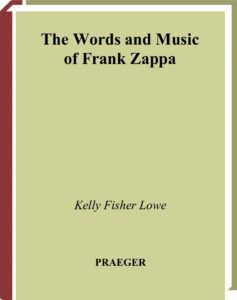 |
|
| The World Hits Of Oldies (Jazz Fake book) |
 |
|
| The World’s best music (Famous Compositions for Piano Vol. 1) 1904 | The world’s best music | |
| The World’s best music V Famous compositions for the piano |
 |
The World’s best music V Famous compositions for the piano |
| The World’s Greatest Fake Book |
 |
Greatest Fake Book |
| The Worlds best music I Famous compositions for the piano |
 |
The Worlds best music I Famous compositions for the piano |
| The Yellow Rose Of Texas – Traditional (Musescore File).mscz | ||
| The Young Pianist’s Anthology Of Modern Music (1972) |
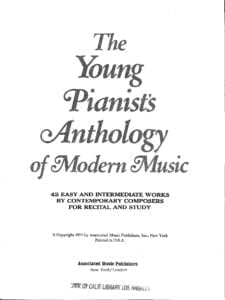 |
The Young Pianist’s Anthology Of Modern Music (1972) |
| The Zombies Songbook |
 |
|
| Thegogos – Head Over Heels | ||
| Thelonious Monk Compositions (as recorded by himself) | Thelonious Monk’s Compositions Fake Book – (Jazz) | |
| Thelonious Monk Blue Sphere |
 |
|
| Thelonious Monk easy piano solos Jazz |
 |
Thelonious Monk easy piano |
| Thelonious Monk – Japanese Folk song (Kojo No Tsuki) (sheet music transcription) |
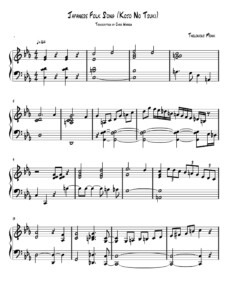 |
|
| Thelonious Monk – Jazz Masters |
 |
Thelonious Monk – Jazz Masters |
| Thelonious Monk – Originals and standards |
 |
Thelonius Monk originals |
| Thelonious Monk – The Man I Love (solo) Gershwin |
 |
|
| Thelonious Monk & Cootie Williams – ‘Round Midnight | Thelonious Monk & Cootie Williams – ’round Midnight | |
| Thelonious Monk Collection | Thelonius Monk Collection | |
| Thelonious Monk Collection 12 Note For Note Solo Piano Transcriptions Artist Piano Transcriptions |
 |
Thelonious Monk Collection 12 Note For Note Solo Piano Transcriptions Artist Piano Transcriptions |
| Thelonious Monk Compositions (as recorded by himself) | Thelonious Monk’s Compositions Fake Book – (Jazz) | |
| Thelonious Monk Fake Book | Thelonious Monk Fake Book | |
| Thelonious Monk Fake Book C Edition |
 |
Thelonious Monk Fake Book C Edition |
| Thelonious Monk For Guitar with TABs |
 |
Thelonious Monk For Guitar |
| Thelonious Monk Intermediate Piano Solos Arranged By Ronnie Mathews 14 Arrangements |
 |
Thelonious Monk Intermediate Piano Solos Arranged By Ronnie Mathews 14 Arrangements |
| Thelonious Monk Jazz Piano Collection |
 |
Thelonious Monk Jazz Piano Collection |
| Thelonious Monk Jazz Piano Solos Series Volume 49 |
 |
Thelonious Monk Jazz Piano Solos Series Volume 49 |
| Thelonious Monk Omnibook for piano Transcribed exactly from his recorded solos |
 |
Thelonious Monk Omnibook for piano Transcribed exactly from his recorded solos |
| Thelonious Monk Plays Standards – Volume 1 Artist Transcriptions Piano 12 transcriptions |
 |
Thelonious Monk Plays Standards – Volume 1 Artist Transcriptions Piano 12 transcriptions |
| Thelonious Monk Plays Standards – Volume 2 Artist Transcriptions Piano 12 transcriptions |
 |
Thelonious Monk Plays Standards – Volume 2 Artist Transcriptions Piano 12 transcriptions |
| Thelonious Monk Quartet featuring John Coltrane at Carnegie Hall (Book) |
 |
|
| Thelonious Monk Revealing Instincts Of The Genius Of Jazz Piano Originals |
 |
Thelonious Monk The Genius Of Jazz |
| Thelonious Monk Round Midnight Jazz Standard arr. Carsten Gerlitz |
 |
|
| Thelonious Monk Solo Transcriptions |
 |
Thelonious Monk Solo Transcriptions |
| Thelonious Monk Tea For Two (piano solo transcription sheet music, partition) | Thelonious Monk Tea For Two (piano solo transcription sheet music, partition) | |
| Thelonius Monk – Monk’s Music and Jazz History in the making (Book) |
 |
|
| Thelonius Monk – Thelonious transcription | Thelonius Monk – Thelonious transcription | |
| Theme de Charles (Un homme et son chien OST) Philippe Rombi | ||
| Thème de Jeanne – Le Diable par la Queue OST (Georges Delerue) | ||
| Thème de Jeanne – Le Diable par la Queue OST (Georges Delerue) trio version | ||
| Theme de Suzanne – Potiche OST (Philippe Rombi) | ||
| Theme from the Mermaid Chair (Secret Garden) | ||
| Theme From The Simpsons Jazz Play Along (Musescore File).mscz | ||
| Theodore Shapiro Diary Of A Wimpy Kid – Main Titles |
 |
|
| Theodore Shapiro Louder Than Thunder The Devil Wears Prada Theme Piano Solo Arr. |
 |
|
| Theodore Shapiro Severance Main Theme |
 |
|
| Theodore Shapiro Suite from The Devil Wears Prada Theme Piano Solo |
 |
|
| Theory Essentials An Integrated Approach To Harmony, Ear Training, And Keyboard Skills (Connie E. Mayfield) Book |
 |
|
| Theory of Harmony – Arnold Schoenberg | Book Theory | |
| These Foolish Things Sheet Music Ella Fitzgerald |
 |
|
| Thinking In Jazz The Infinite Art of Improvisation Berliner, Paul (Book) 1994 |
 |
|
| This Is Halloween Easy Piano |
 |
|
| This Is Us Songbook Selections From The Television Series Soundtrack |
 |
|
| This Land Is Your Land (Guitar Chords) (Musescore File).mscz | ||
| This Land Is Your Land (Musescore File).mscz | ||
| This Little Light of Mine (African-American Spiritual) from The Best Children’s Songs Ever (Easy Piano) | This Little Light of Mine (African-American Spiritual) from The Best Children’s Songs Ever (Easy Piano) | |
| This Little Light of Mine (African-American Spiritual) from The Best Children’s Songs Ever (Easy Piano) Musescore file.mscz | ||
| Thomas Attwood Allegro First Movement From Sonatina No. 1 In G (Trinity Grade 2 Piano) |
 |
|
| Thomas Attwood – Allegro – First Movement from Sonatina No. 1 in G (Trinity Grade 2 Piano).mscz | ||
| Thomas Johnson READ AND PLAY New Series Grades II, III and IV Piano |
 |
|
| Thomas Newman – Any Other Name (American Beauty Theme) | Thomas-Newman-Any-Other-Name-American-Beauty 1st page | |
| Thomas Newman – Road To Perdition – Road To Chicago |
 |
|
| Thomas Newman – Road To Perdition (Piano Solo) |
 |
|
| Thomas Newman – Road To Perdition Theme – Guitar Tabs |
 |
|
| Thomas Newman – The Horse Whisperer – Montana | Thomas Newman – The Horse Whisperer – Montana | |
| Thomas Newman – The Horsewisperer – The Vast Continent |
 |
|
| Thomas Newman – The Horsewisperer – Voice Of God | Thomas Newman – The Horsewisperer – Voice Of God | |
| Thomas Newman – The Shawshank Redemption – Stoic Theme |
 |
|
| Thomas Newman Forbidden Love (Meet Joe Black) | ||
| Those Were The Days (Musescore File).mscz | ||
| Those Were The Days Russian Traditional Jazzy Version | Those Were The Days Russian Traditional Jazzy Version | |
| Three Coins In The Fountain 1954 by Jule Styne and Sammy Cahn |
 |
|
| Three Days Grace – Never Too Late | ||
| Tidus And Yuna’s Theme (Musescore File).mscz | ||
| Tifa’s Theme (Final Fantasy VII Piano Collections) |
 |
|
| Tifa’s Theme Final Fantasy Vii Piano Collections (Musescore File).mscz | ||
| Tim Minchin – Miracle (Matilda the Musical) | Tim Minchin – Miracle (Matilda the Musical) | |
| Tim Minchin – Prejudice (Musical Comedy) Piano Sheet Music | Tim Minchin – Prejudice (Musical Comedy) Piano Sheet Music | |
| Tim Richards Improvising blues piano (PDF + MP3 audio tracks) |
 |
Improvising Blues Piano (with audio Mp3) |
| Tim Richards – Exploring Jazz Piano Vol. 1 (with MP3 audio tracks) |
 |
Tim Richards Exploring Jazz Piano 1 |
| Tim Richards – Exploring Jazz Piano Vol. 2 (with MP3 audio tracks) |
 |
Exploring jazz piano 2 |
| Tim Richards – Exploring Latin Piano (with audio MP3) |
 |
Tim Richards – Exploring Latin Piano |
| Tim Smith Cardiacs All Spectacular Piano Solo |
 |
|
| Tim Smith Cardiacs Savour Piano Solo |
 |
Lennie Tristano discography
Intuition (1946–52; Box 4 CD + Booklet 40 S.(en), compil. 2003 Proper/mcps)
Complete Recordings of Charlie Parker with Lennie Tristano (1947–51, ed. 2006)
Live at Birdland 1949 (Jazz Records 1979, 1990)
Live in New York (1949; with Lee Konitz, Warne Marsh, Billy Bauer u. a., compil. 2004 by Jazz Door)
Crosscurrents Capitol 1949 (als Album veröffentlicht erst 1972)
Descent into the Maelstrom, Inner City 1952
Lennie Tristano (Atlantic, 1956)
The New Tristano (Atlantic, 1961)
Concert in Copenhagen (aufgenommen 1965, Jazz Records 1997)
The Duo Sessions (Dot Time, ed. 2020)
Personal Recordings 1946-1970 (Mosaic/Dot Time, ed. 2021)Collection
The Complete Atlantic Recordings of Lennie Tristano, Lee Konitz & Warne Marsh (1955-58) – (Mosaic – 1997) – 10 LPs oder 6 CDs – Lennie Tristano p mit Lee Konitz, Gene Ramey, Art Taylor, Peter Ind, Jeff Morton dm –
Lee Konitz as mit Sal Mosca, Peter Ind, Dick Scott dm, Billy Bauer, Arnold Fishkind b, Jimmy Rowles, Leroy Vinnegar, Shelly Manne, Don Ferrara – Lee Konitz & Warne Marsh ts mit Sal Mosca, Billy Bauer, Oscar Pettiford, Kenny Clarke, Ronnie Ball p – Warne Marsh mit Ronnie Ball, Paul Chambers, Philly Joe Jones, Paul Motian